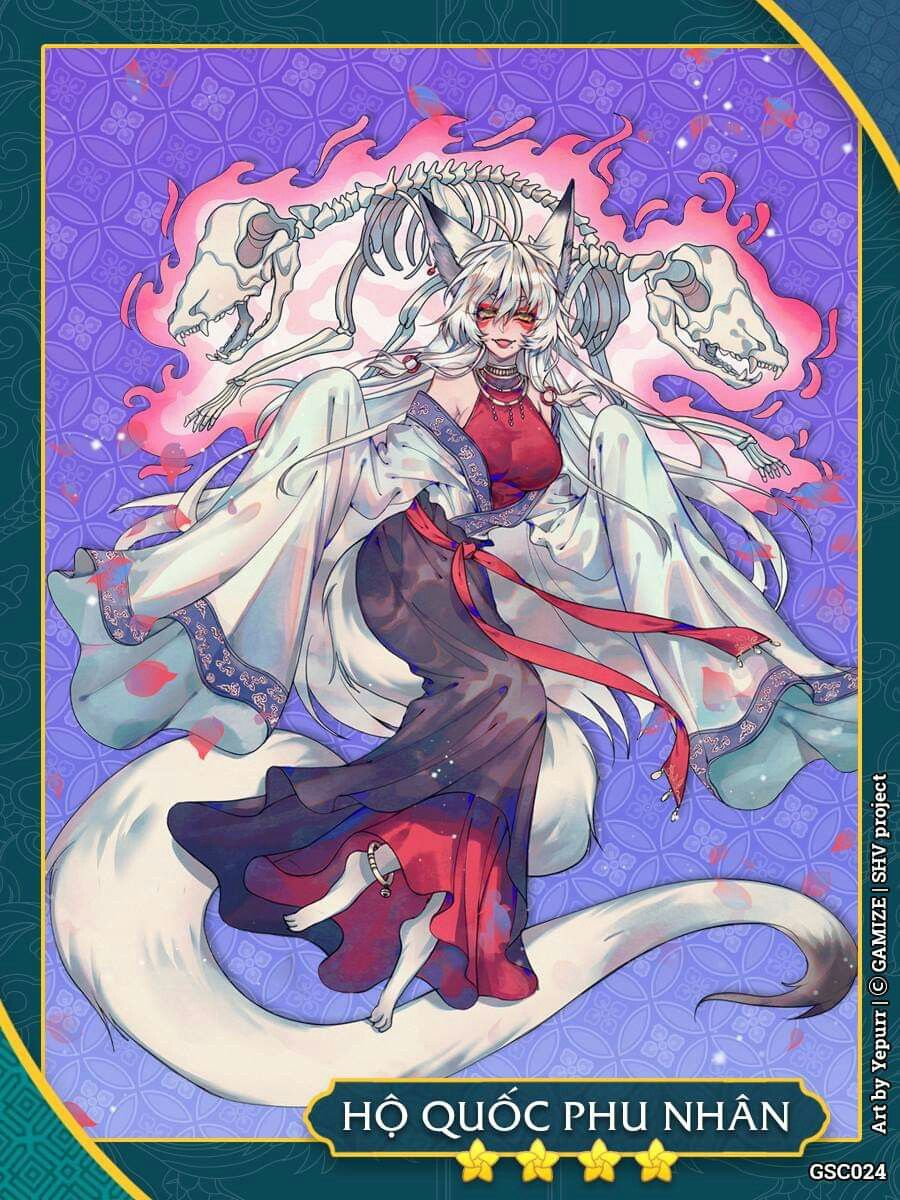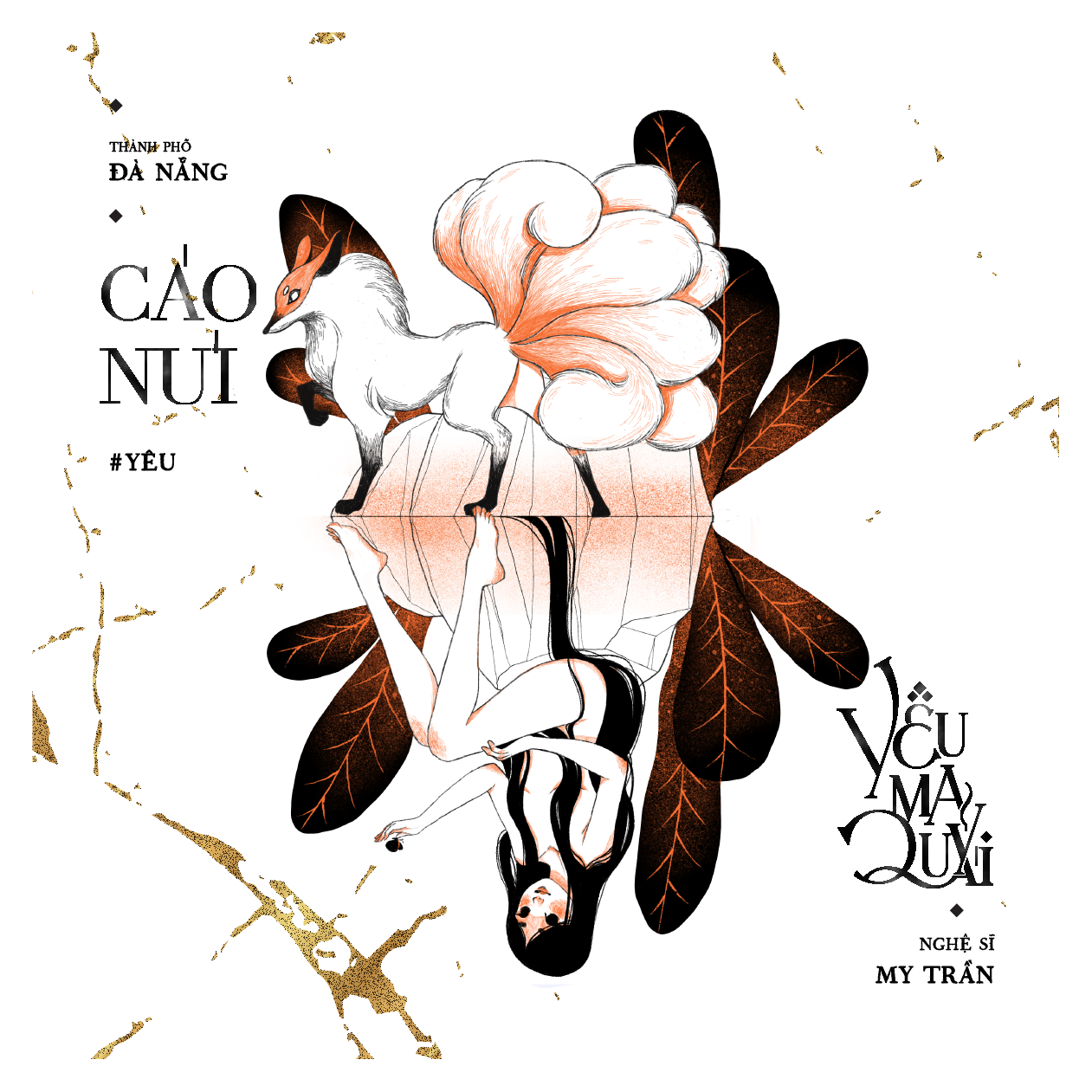Yes. The fox spirit is called Hồ Li Tinh 狐狸精 or Hồ Tinh 狐精 in Vietnamese. Once the spirit gains 9 tails, it's called Cáo Chín Đuôi, Hồ Li Chín Đuôi, or Cửu Vĩ Hồ 九尾狐, all meaning Nine-Tailed Fox. The fox spirit appeared thrice in Vietnamese legends and mythologies, one in Đại Việt Sử Kí Toàn Thư 大越史記全書 , one in Vũ Trung Tuỳ Bút 雨中隨筆 , and one recorded in multiple shrines throughout southern Vietnam, especially Đà Nẵng.
Lạc Long Quân is a Vietnamese national hero and the mythical father of all Vietnamese. According to legends, he performed Herculean tasks of defeating multiple demons to save the people from danger, and one of them was a Nine-Tailed Fox.
The fox spirit lived under a mountain just west of modern-day Hà Nội. For over a thousand years, this nine-tailed fox had lured people, especially young women, back to its cave, where it tortured and ate them. It could take on many forms, often playing tricks on people to make them hate and suspect each other. Upon hearing this tale, and of the misery this beast had brought to the lives of his people, Lạc Long Quân took action. When he found the fox, he trapped it with spells, forcing it to take its form as the giant fox demon. Sensing defeat, Hồ Tinh tried to flee but Lạc Long Quân chased, eventually killing him after a battle that took three whole days. As the legend goes, after Lạc Long Quân released the people from Hồ Tinh’s cave, he flooded the area. Those waters became what is now called West Lake in Hà Nội.
Another story took place when Lê Lợi, the soon-to-be Emperor Lê Thái Tổ, was fighting Ming dynasty for Vietnam’s independence. When he was defeated and ran, he saw a corpse of a woman on the way. Lê Lợi then dug a hole and gave her a proper burial, saying that if she protected him from getting captured, he would repay her.
When the Ming soldiers were close, he hid in the bushes. The Chinese soldiers then sent dogs to sniff him out, but spotted within the bushes was a fox with a human face. The fox ran away and the dog followed, but those Ming soldiers killed the dogs for not doing their proper jobs. The soldiers then left, and Lê Lợi escaped capture.
After he became emperor, he would return to that area and set up a shrine, conferring the woman the title of Hộ Quốc Phu Nhân, or Lady Protector of the Nation. The fox spirit eventually became a local god of the area.

In the book Đình Nam Bộ Xưa & Nay by author Huỳnh Ngọc Trảng, many shrines in Hồ Chí Minh City worship 2 mythical creatures, Hồ Li Cửu Vĩ tiên nương 狐狸九尾仙娘 and Phấn Nhĩ Quỷ Vương tiên nương 奮茸鬼王仙娘. According to the legends told by the locals, when Vietnamese began entering this region for a new life, the land was filled with forests, monsters, and the unknown wild. Many people would die under the wild animals’ mercy.
Suddenly, one day, in a cave nearby, a nine-tailed fox and a feathered bird appeared and transformed into two women, who would then eliminate the monsters, saving the village. They would disappear afterwards, never to be seen again. The people of that land created a shrine to worship them for good luck.


